LES PLUS BEAUX VILLAGES IN THE DORDOGNE-PÉRIGORD
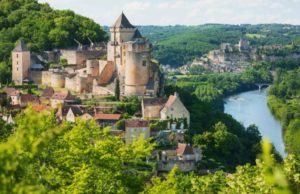
Boasting more villages designated as Les Plus Beaux Villages de France than any other region, except perhaps Provence, the Dordogne has some of the finest treasures of natural and cultural heritage in the country. You’ll find fortress châteaux, churches, honey-coloured stone buildings, troglodyte cave dwellings, ancient barns, medieval villages, beautiful woodlands, meandering rivers and panoramic views. The food is sensational, based on locally grown produce and specialties such as duck, walnuts and truffles.
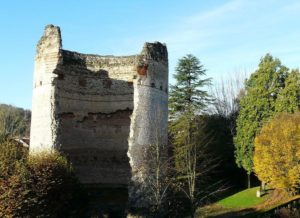
The history of the Dordogne is that of a region torn by wars of religion, invasions and uprisings, and together with its geographic features, the result is the many fortified chateaux and beautiful bastide (fortified) villages we enjoy visiting today.

Ancient tribes of the Petrocores fiercely resisted the invading Roman legions, and today we can see the remains of ruined towers, arenas and outstanding archaeological collections in the region’s museums. As well, we can visit subterranean caves where the local people often sought refuge during turbulent times.

The region saw many battles and conflicts when it was passed back and forth between the French and English Crowns—starting with the remarriage of Eleanor of Aquitaine in 1152–through to the end of the Hundred Years’ War in 1453. Then came the Wars of Religion in the 16th century, followed by any number of political upheavals, including the Revolution and the years of the Resistance during WW2. Such a violent past has been transformed by time into the many gorgeous little villages, gentle, rolling landscapes, richly endowed river valleys and spectacular hilltop fortresses that makes the Dordogne such a wonderful destination for us to enjoy today.
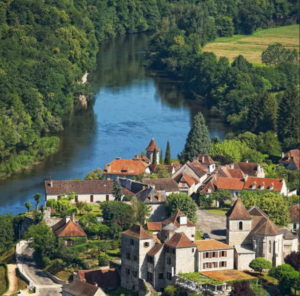
There are so many delightful villages in the Dordogne, but as you can imagine, all those that have been admitted to the ranks of Les Plus Beaux Villages de France are at the top of the list of “must sees”. I’ll confine this story to just a few of these—those we know, that if you’re planning a visit, we think are absolutely unmissable.
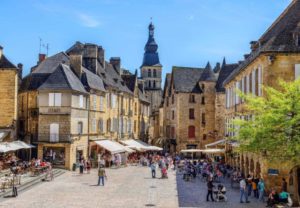
Since so many of the villages are not far from each other, it’s possible to visit all of these mentioned here in just a couple of days, taken at a leisurely pace to enjoy the special features of each one. It makes sense then to stay somewhere central, rather than uprooting and moving on too frequently. There’s one town that offers everything you could wish for: a good choice of accommodation, cafes, restaurants, and great shopping opportunities, including local produce markets, and the bonus of a number of festivals throughout the year. I’m talking about the beautiful medieval town of Sarlat-la-Canéda. There are so many great attractions to explore in Sarlat that I’ll devote more space to it in a future Blog post.
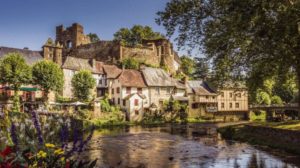
Starting with the village furthest away from Sarlat, we’ll head north for 1 hr 20mins. to the PBVdeF village of Ségur-le-Château, located on the peninsula on a loop of the Auvézère river in the Dordogne departement of Corrèze. As its name suggests, it was the “safe place” where the Viscounts of Limoges chose to establish their fortified château on the hilltop in the 12th century. The château now lies in impressive ruins, and inside the defensive walls there are the remains of one of its dungeons and the Chapel de Notre Dame. During the 15th to 18th centuries when there was a Court of Appeal, many notable public figures, magistrates, knights and master craftsmen made Ségur their home.
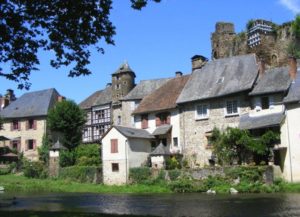
Today, we can see a number of significant half-timbered, turreted houses as well as the remains of the Court of Appeal. Look out especially for the Maison Henri IV with mullioned windows, the timber-framed Maison Boyer with colombage facade, and the 16th century St Laurent Tower. There’s also a rich and varied selection of smaller architectural highlights lining the village streets. On Monday evenings during the summer months, there is an outdoor market specialising in local produce. The whole evening is accompanied by live music and festive light shows, creating a fun, lively atmosphere.
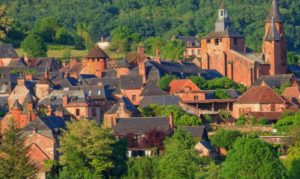
From here, we head down to Collonges-la-Rouge, which is roughly 73kms N. E. from Sarlat. This is the founding village of the PBVdeF association. Known as the town of 25 towers or turrets, from its dazzling reddish honey-coloured walls and abundance of flowers to its rich heritage, Collonges-la-Rouge offers a photo opportunity at every corner. Its original inhabitants put down roots around the 8th century, and the village became a stronghold of the Counts of Turenne by the 14th century, one of the largest fiefdoms in France. The village’s hallmark is undoubtedly its golden red buildings (hence the name) built of a sandstone rich in iron oxide. This is unusual for other parts of France, but are characteristics of parts of this region, and the buildings are all roofed with either ‘lauze’ stone slabs or slate. It’s a visual delight to stroll along the narrow alleyways, fringed with these flamboyant medieval gems and draped with either clusters of grapes, masses of wisteria or crowned with an elaborate tower. Even from a distance, the 25 turrets are visible peeking up among the meadows and chestnut and walnut orchards.
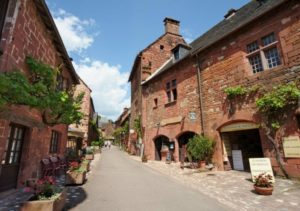
There are impressive manor houses, modest cottages and 15th and 16th century houses, as well as the beautiful Église St Pierre and a covered market. Don’t miss architectural treasures like Château de Vassinhac with its elegant, mullioned windows or Château de Benge with its machicolation remains (a floor opening though which stones, boiling water or oil or even burning objects, could be poured down on the heads of invaders) and beautiful Renaissance windows. Thanks to the church and the former Chapelle des Penitents, the village has, and continues to be, an important stop for pilgrims on their way to Santiago de Compostela. There are also plenty of cafés and restaurants and some good opportunities for a little retail therapy, with dozens of artisans selling quality local produce and locally made aperitifs.
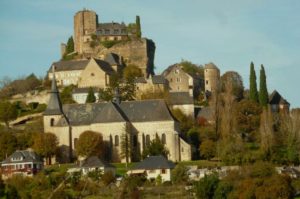
Ten kms from Collonges-la-Rouge, back in the direction of Sarlat, is one of its near neighbours, Turenne, also a member of the PBVdeF. From the remains of the fortress château on the hill overlooking the village, to the quaint square at the bottom, no visitor should miss a trip to Turenne and its descending spiral of picture-postcard perfection. There’s a fabulous view from the hilltop. The fortress was built to protect the feudal seat of the Viscounts of Turenne, and the remains that the visitor sees today are a large part of the original fortified walls and two high towers separated by a beautiful garden.
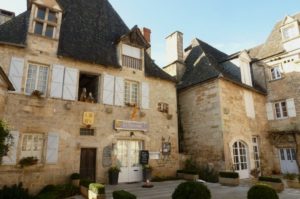
The Treasure Tower houses a 14th century donjon and guardroom, whilst the round Caesar Towers offers a superb view over the surrounding countryside from the top of its spiral staircase. Originally inhabited by noble families, the village houses date from 15th to 17th centuries, and many sport either a turret or bartizan—an overhanging, wall-mounted turret projecting from the walls. Turenne boasts two important churches, the Porte de Mauriolles, which is one of the original stone gateways in the fortifications, as well as the Calvary Tower, Canon’s House and Hôtel de Cosnac, an old hunting lodge.
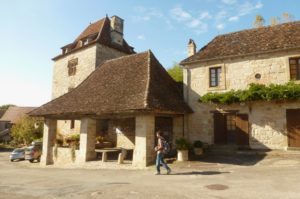
To step into Curemonte, with its medieval châteaux and quaint streets, is to be transported back to the Middle Ages. Stretched out along a ridge overlooking the valleys of Sourdoire and Maumont, today its fortified hilltop position affords beautiful views across the surrounding countryside, but in the past, its location gave it strategic importance to the area. Renowned for its authenticity, this charming village will delight the visitor with its three churches, three châteaux and three fountains, as well as its narrow streets lined with medieval aristocratic houses adorned with turrets and crests. The village has a handful of gift shops, cafes and local producers offering such exotic goodies as delicious liqueurs and jams made from locally harvested wild dandelions.
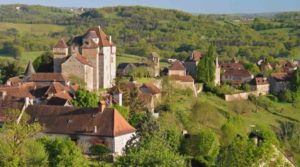
In the upper reaches of the village is an orientation table, from where you can enjoy wonderful views of the flat and conical village roofs. Curemonte is also a walker’s paradise with dozens of trails around its two valleys. A night market is held every Wednesday evening in summer with shared tables and barbecues available, and if you’re lucky to be there on Bastille Day, you can join in the open-air dinner and ball. The village is barely a 20 min. drive S.E. from Turenne and about an hour across to Sarlat.
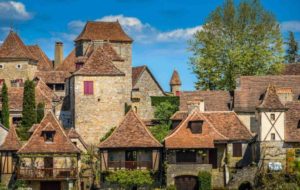
A little further south is Loubressac, set on a rocky outcrop offering unparalleled panoramic views across the Bave and Cère Valleys, and neighbouring châteaux of Turenne, Castelnau-Bretenoux and Montal. Loubressac has received many awards for its colourful floral displays. Spring and summer brings cascades of flowers and hanging baskets on decorative balconies, in peaceful courtyards and pretty staircases, laneways and squares. Built of ochre stone and capped with pointed, brown-tiled roofs, the charming medieval houses line the cobbled streets. The fortified 15th century château occupies a remarkable site on top of the promontory, and a fine medieval church is built into the fortifications that predate the existing château. Loubressac is a little over an hour across to Sarlat, heading west.
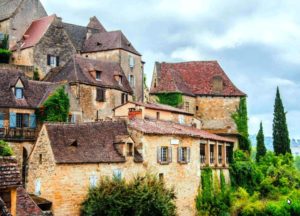
In the opposite direction, west out of Sarlat for about 20 mins. lies the village of Beynac-et-Cazenac on the banks of the Dordogne river. The village is protected by the château de Beynac looming above it, one of the most impressive and well preserved fortified châteaux in the Dordogne Valley. It’s very atmospheric, and as you make your way up the towers and peer through the arrow slits, it’s easy to imagine what it was like during the Hundred Years War and the numerous other battles and confrontations that the château and its village endured, such as when Richard the Lionheart once occupied it, and gazed out across the valley to the enemies opposite in the Château de Castelnaud. Each aspect of the château, from the original donjon (keep), guards’ room and fortified towers, exhibits the architecture of medieval warfare, while the private quarters and banqueting room offer insights into the level of opulence and comforts enjoyed by the occupants. Similar to other villages in the area, the pretty village houses are constructed from a distinctive ochre stone with stone roofs.
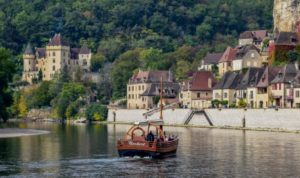
Five kms. away we come to La Roque-Gageac. Once a busting port, the cliff-clinging village remains unchanged with its string of beautiful, ochre-coloured stone houses situated along the banks of the Dordogne river. La Roque-Gageac offers the visitor a labyrinth of cobbled streets, a Romanesque church and a fascinating troglodyte fort. Occupied since prehistoric times, the fort and cave dwellings hollowed high into the cliff face were fortified in the Middle Ages against invasion.
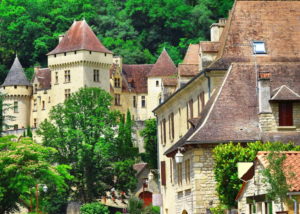
Two particularly outstanding properties grab the attention. The first is Manoir de la Tarde, with its circular tower and stone-mullioned windows, and the second is Château de la Malartrie, built in the 19th century in the Renaissance style, that sits at the far left of the village. The small church halfway up the cliff stands in an exotic garden of palms, cactus, bamboo, banana plants and fig trees that flourish thanks to the village’s south-facing position, sheltered by the cliff from northern winds. From here, visitors can marvel at the superb panorama over the river, which is usually dotted with swimmers, canoes or ‘gabarres’. These were flat-bottomed boats that once transported goods such as timber, wine or salt to other regions in France. Today, tourists can embark on replicas of the traditional gabarres for an hour-long cruise along the river.
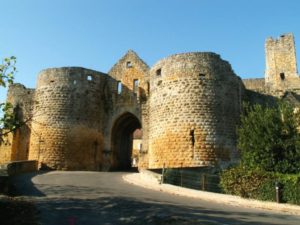
Barely 6 kms from La Roque-Gageac, and roughly 13 kms from Sarlat, lies the village of Domme, one of the most photographed villages in the Dordogne. With unrivalled views of the Dordogne Valley that seem to disappear into the distance, this medieval bastide (a fortified town or village) seems to have it all. Stunning views, great shops, excellent cafes, and restaurants, its architectural heritage is extremely well preserved and steeped in history. Constructed in 1281 at the behest of King Philippe III, Domme was constructed to serve as a key strategic defence in the Hundred Years War. It was captured by the English in 1346 and held for a time, and fortunately survived the war relatively unscathed. Today, this walled village constructed of honey-coloured stone is a stunning reminder of its past.
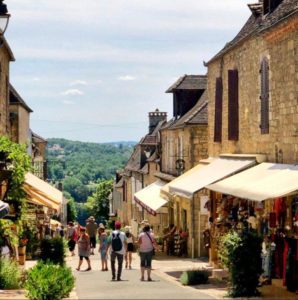
Visitors pass under the fortified arches to explore the village and especially the ramparts. The prison still shows graffiti etched into its stone walls by Knights Templars, who were imprisoned and sentenced to death here in the early 14th century. Also make sure to visit the Grotte de Domme, a cave deep under the centre of the village and 450m long, filled with stalactites and stalagmites. The village has many artisanal shops, and if visiting on a Thursday, be sure to check out the local market where you can stock up on local produce and tasty local treats.
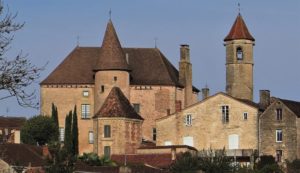
From Domme, we head across to Belvès, about 17kms away. Located in the heart of the Perigord Noir region of the Dordogne, its name literally means “beautiful view.” Perched on a spur above the Nauze Valley, and constructed up the side of a steep rocky outcrop, Belvès is known as the medieval town with the 7 bell towers. Despite the invasions and wars that have marked its history, the village has preserved the many outstanding examples of its built heritage in a typical bastide layout.
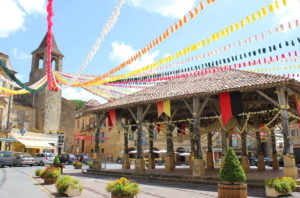
The village is centred around a big square dominated by a large timber 15th century covered market, and surrounded by shops constructed in the lovely honey-coloured local stone. On one side of the square is a tall 11th century belfry, which was originally a defensive tower overhanging a sort of deep moat or trough in which people dwelt in caves. There are a number of these troglodyte cave dwellings under the Places des Armes, the main square—the “Habitations troglodytiques”—entered via the fortified gate at the corner of the square. In the 11th century a drawbridge at the fortified gate was the only entry into the village. Just out of the village there was a watch tower, ‘La Tour du Guet’, overlooking the valley, whose purpose was to warn of approaching enemies.
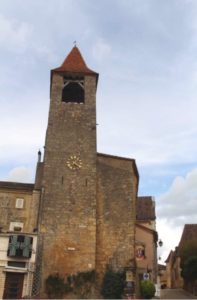
Other outstanding attractions include the 12th century Hôtel Bôntemps, that had a facelift in 1520 to give it a more fashionable Renaissance façade; the substantial square ‘Tour de l’Auditeur’, unchanged since the 11th century; the Tour des Filhols, an 11th century tower above the Belvès tourist office, once the Maison des Consuls, built in the 15th century. The main church is Notre-Dame de l’Assomption, dating from the 13th century, and also have a look at the town’s Hotel de Ville, originally the Couvent of the Frères Prêcheurs, built in the 13th century. All that remains of the original Couvent/monastery though is the striking octagonal tower. There’s also a 14th century château on the edge of town that’s worth a look.
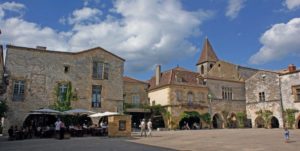
Last on our list is Monpazier, one of the best-known and most admired villages of the PBVdeF of the entire region, and one of our favourites. With no less than 32 classified Monuments Historiques, this bastide was founded in 1284 by Edward I of England. It was once entirely surrounded by thick defensive walls with six large stone gateways piercing the walls. Of these, two have survived: one in the north of the town and the other in the south. Acknowledged as the “model bastide” with its perfect layout, Monpazier’s medieval centre is preserved almost completely intact, and is quite possibly the best of all the bastide towns to visit to recapture the life and atmosphere of 600 years ago. Like so many towns and villages of the region, Monpazier has a violent history, particularly during the Hundred Years War, and from 1594 to 1637, the town was the centre of peasant insurgence, triggered by the terrible conditions following the end of the Wars of Religion.
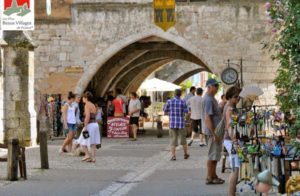
Today, the arcades around the edge of the main square are still the focus of the village, and also don’t miss the market hall, complete with intact weighing and measuring apparatus. Strolling around the village you can see three distinct types of architecture: medieval houses, classical style houses and bourgeoise houses. This diversity has allowed Monpazier to be classed as a ‘ville-monument’ rather than just individual houses being classified, and as well, has been elevated to the rank of ‘Grand National Site’ for the richness of its architectural heritage. Near the main square is the 13th century church and one of the most imposing houses, the Maison du Chapitre, which served as a storage facility for the grain the local peasant farmers had to pay in taxes, referred to as the ‘dime’. Another interesting building is the Convent des Recollets, began in 1644 and now used as an exhibition space. Stroll along its narrow streets and alleyways, wander under the arches and discover the boutiques and excellent restaurants, a number of which would make a delightful place to enjoy dinner in the evenings, when you can sit outside and take in the beautiful architecture and atmosphere of the village.
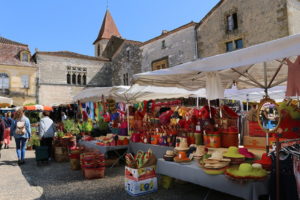
The Thursday morning market on the Place des Cornieres has existed there for over 700 years, and you’ll find fresh produce, local artists and craftspeople based in the village.
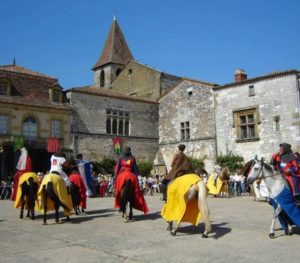
In spring, Monpazier celebrates the ‘flower festival’ and a ‘medieval day’ in summer, when the locals all dress in their medieval finery and take part in many medieval-themed activities.
From Monpazier, it’s a pleasant 50km drive back to Sarlat-la-Canéda.
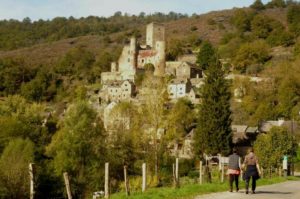


It’s amazing that so much still stands – what a sense of history.
That’s what so fascinating with cultures as old as these. I love the fact that we can explore the very distant past, even if only passing through as visitors, and as you say, so much is still standing, and often thanks to organisations like the Plus Beaux Villages. Glad you enjoyed reading about just a fraction of what’s in this region.